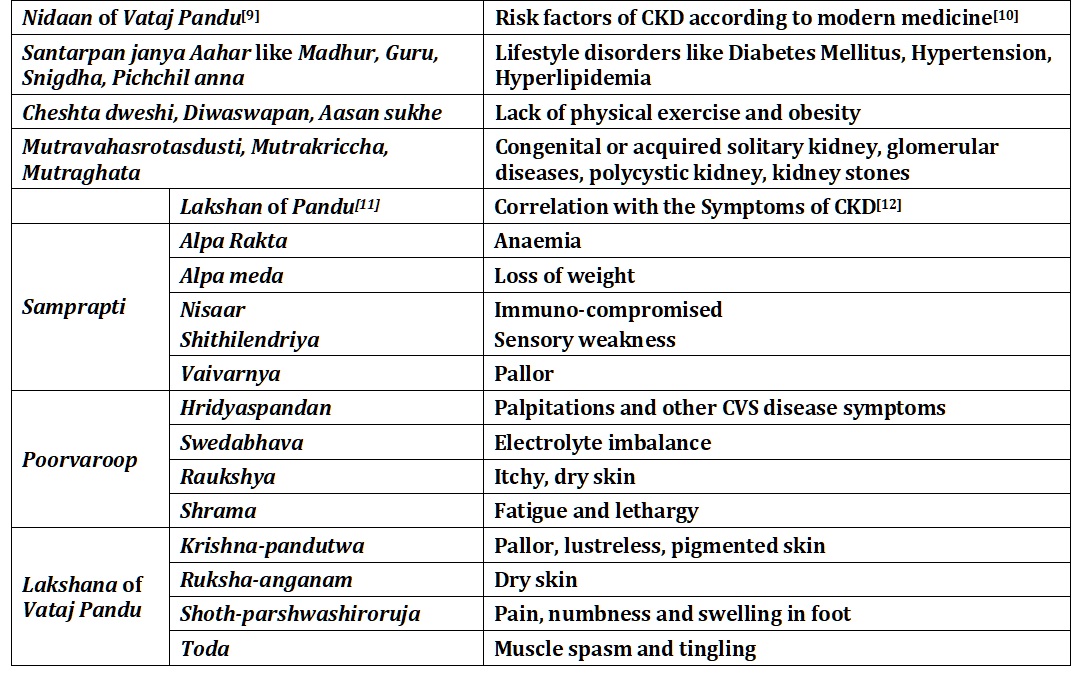Chronic Kidney Disease in Light of Ayurveda: A Literary Review on Vataj Pandu
Abstract
In recent years, chronic kidney disease (CKD) has become a centre of attraction for researchers all over the world, due to increasing incidence. However, delayed diagnosis and lack of proper management has made it one of the leading causes of death worldwide. In the earlier phase of the disease, relief to the patients can be provided based on chief complaints. But as the disease progresses, only dialysis and kidney transplants remain the line of treatment according to the mainstream system of medicine, thus leading to a large number of side effects and ultimately decreasing the life expectancy. In Ayurveda, CKD is not mentioned in the Samhita directly, but it can be correlated with Vataj pandu according to similarities in some of the symptoms and causes of these two diseases as mentioned in ancient literature. We can also look out for the Nidaan and Samprapti according to the history given by the patient and evaluate the Dosh, Dushya, and the Srotas involved, and then devise a line of treatment according to the patient's Bala, Prakriti, Agni and Oja. In this article, we're going to talk about an aspect of CKD that can be used as a part of management to improve the quality of life and give hope to all the patients suffering from this disease.
Downloads

Copyright (c) 2024 International Journal of Ayurveda and Pharma Research

This work is licensed under a Creative Commons Attribution-NonCommercial-ShareAlike 4.0 International License.






